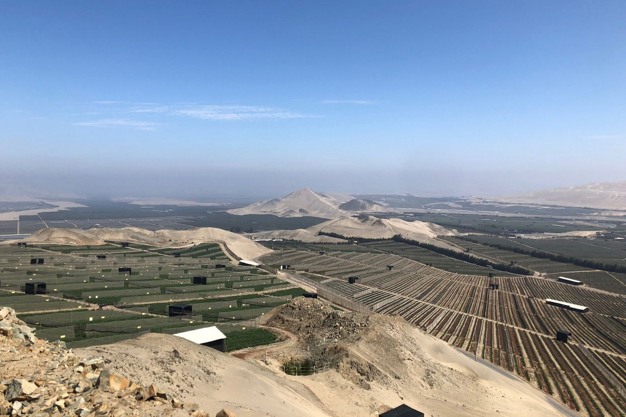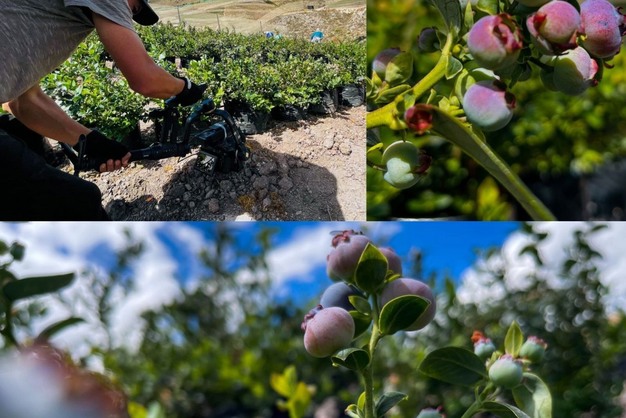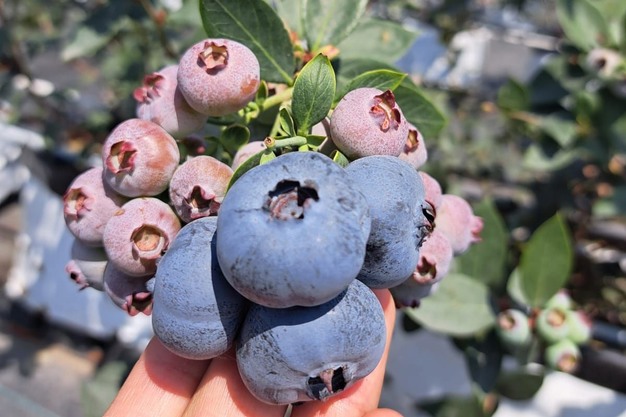New blueberry varieties and lessons from a difficult couple of years of El Niño weather patterns have allowed the Peruvian blueberry industry to strategically shift their peak. The season is also off to a slower start than last year, due to later pruning. Luis Miguel Vegas, General Manager of industry body ProArandanos: "The slow start is due to two factors, the consequences of El Niño last year, and the fact that Peru's blueberry industry is setting itself up to have a shorter peak, spreading the volume into more weeks of the year."

Miguel Vegas details the reasons for the slower start to the blueberry season in Peru. "Usually, our season begins in May and last until April the following year. For May and June this year, we shipped less volume than last year during El Niño. This is clear evidence of a slow start to the season. This is mainly due to two factors, namely the consequence of El Niño season last year and drop and delay in production due to higher temperatures. The industry had to prune later than usual. On average, pruning takes place between mid-December and January. This year, the industry pruned at least 30 days later than usual, which was now in mid-January. In Peru, from pruning to production take 6–8 months, this means all the growing cycles have been delayed for this year."

Another big factor is that Peru's blueberry industry has taken the strategic decision to have a less concentrated peak harvest period, while they aim to have a more even spread of volumes throughout the export season. "Our aim is for Peru's industry to set itself up to have a shorter peak and to spread the volume into more weeks of the year. We are mainly pushing the volume from our usual October window in Q4 into Q1 of the new year. The forecast is to have the peak week in week 44. This can change, it should be around that date. The volumes we expect is to have the total volume between last season and two seasons ago. Traditionally, Q3 accounted for around 45% of the volume of the season, while Q1 accounted for 10%. Now Q3 will drop to around 25% of the overall volume and Q1 will account for 20% of the volume. In this new curve we will see the volume of Q3 dropping while Q1 volume is increasing, it's a simple way to see what's happening with the Peruvian forecast. We will have a much stronger Q1 than usual, and the Peruvian blueberry industry is getting ready to spread the volume from Q4. To have such a concentrated peak makes it more challenging for growers, we therefore want a more consistent supply to markets by spreading the peak," explains Miguel Vegas.
Monthly Peruvian blueberry forecasts
Because of the long harvesting period that is nearly year-round, Miguel Vegas says the forecasting will be done more regularly. "Our forecasting for this year will be updated on a monthly basis. We are expecting a slow start to the season with similar volumes to last year up to September, therefore Q3 will not be significantly more than last year. The peak of the season now starts partly in November, which was the case last year. Traditionally, the peak was between late September and early October," states Miguel Vegas.

He says the weather in Peru is finally back to normal with optimal growing conditions. "We are seeing the flowers and expect to have more volumes than last year. Our expectation is to have a nice offer of different varieties. In Peru growers switched to many new varieties that is exciting for consumers," concludes Miguel Vegas.
For more information:
Luis Miguel Vegas
ProArandanos
Tel.: +51 980 503 363
Email: [email protected]
www.proarandanos.org
